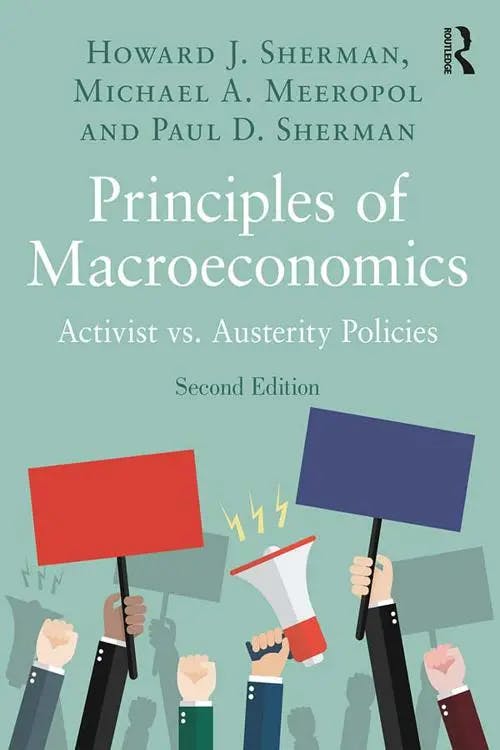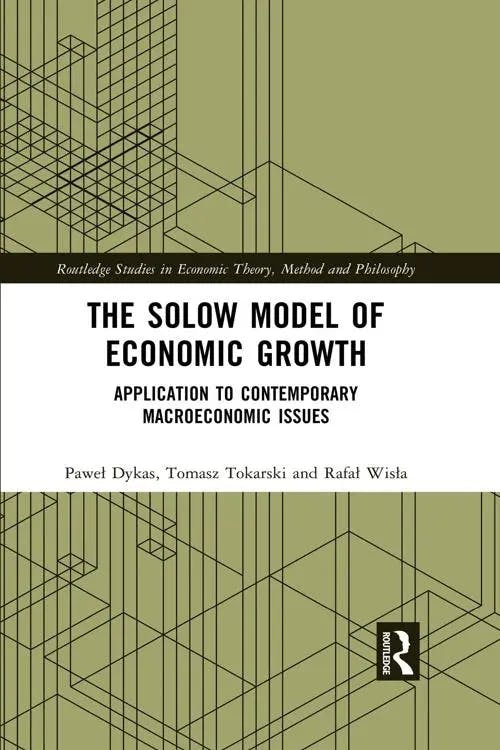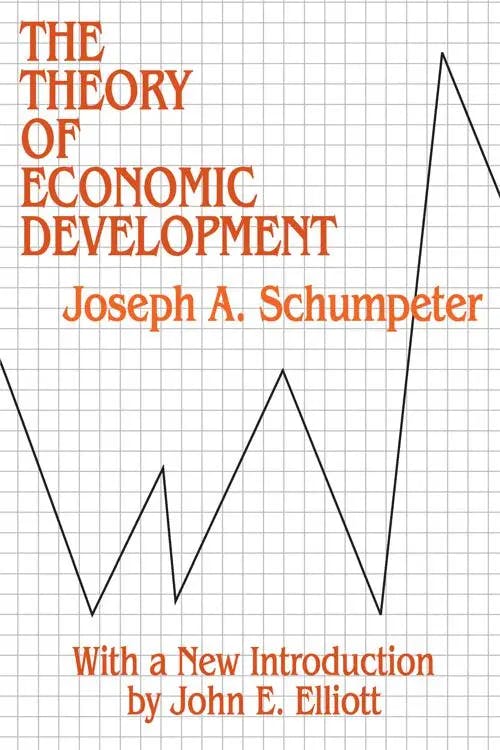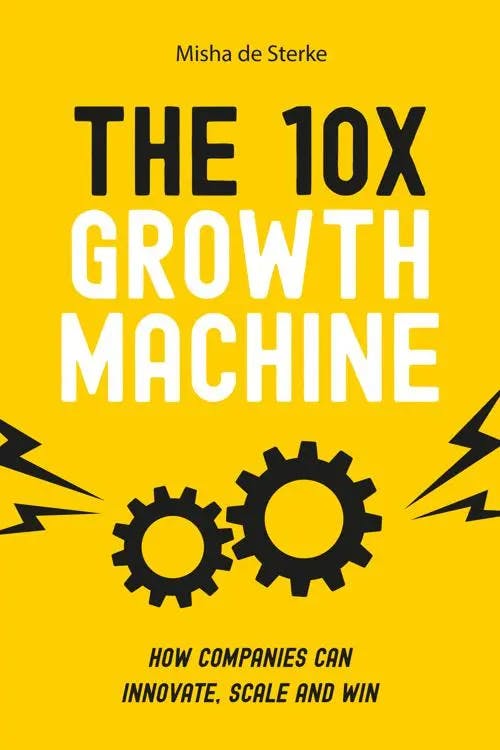What is New Growth Theory?
MA, Management Science (University College London)
Date Published: 19.07.2023,
Last Updated: 09.01.2024
Share this article
Defining New Growth Theory
Economies change over time. They have their ups and downs depending on the state of different factors in the economy. When economies are growing in periods of prosperity, it is said that they experience economic growth. This happens when there is an increase in the amount of goods and services produced in an economy over a period of time. The book Principles of Macroeconomics (Sherman, Meeropol and Sherman, 2018) illustrates how the definition of economic growth works in practice.
Economic growth takes place whenever labor, plant and equipment, or available natural resources increase in either quantity or capability. A capability increase occurs when an element of production achieves a higher productivity. If an acre of land is planted more closely, weeded more thoroughly, and defended more successfully from blight, pests, and foraging animals, then the amount of food grown on that acre will increase. Similarly, if 100 workers in a field are given better tools to work with, then the amount of food grown per worker will increase. (2018)
Howard J. Sherman, Michael A. Meeropol & Paul D. Sherman
Economic growth takes place whenever labor, plant and equipment, or available natural resources increase in either quantity or capability. A capability increase occurs when an element of production achieves a higher productivity. If an acre of land is planted more closely, weeded more thoroughly, and defended more successfully from blight, pests, and foraging animals, then the amount of food grown on that acre will increase. Similarly, if 100 workers in a field are given better tools to work with, then the amount of food grown per worker will increase. (2018)
Economists have always had opposing views on the drivers of economic growth. For instance, Robert Solow, American economist and Nobel Prize winner, believed that external economic factors such as population growth or savings rates dictated growth. The book The Solow Model of Economic Growth (Dykas, Tokarski and Wisła, 2022) explains the foundations of Solow’s model of external drivers of economic growth in depth.
Two models are proposed: a model with exogenous investment rates and a model wherein the assumption about the exogenous nature of investment rates and flows is cancelled. (2022)
Paweł Dykas, Tomasz Tokarski & Rafał Wisła
Two models are proposed: a model with exogenous investment rates and a model wherein the assumption about the exogenous nature of investment rates and flows is cancelled. (2022)
Contrary to this, economists Paul Romer or Joseph Schumpeter thought that internal economic factors such as labour, capital and innovation were its main drivers. New Growth Theory emerges from this wave of thinking, proposing that increased productivity and economic growth is primarily driven by people, or systems’, intrinsic motivation to generate profits.
How does New Growth Theory work?
According to New Growth Theory, people's urge to learn and earn more drives economic growth. New Growth Theory suggests that individuals in a capitalist society will generally look for better and more efficient ways of doing their jobs; this in turn leads to greater profits for their organisations, the wider economy and ultimately themselves. As a consequence, the productivity or the number of goods produced by an individual will increase. When aggregated, and assuming that all individuals in all organisations are subject to New Growth Theory, the number of goods and services produced in a nation will increase over time. This is economic growth. Indeed, the book Creating a Learning Society (Stiglitz et al., 2014) exemplifies how under this lens, economic growth is a chain reaction that starts from the pursuit for “more”.
As we produce and invest, we get better at what we do. If one builds more ships, one becomes more efficient at building ships, productivity increases. (2014)
Stiglitz et al.
As we produce and invest, we get better at what we do. If one builds more ships, one becomes more efficient at building ships, productivity increases. (2014)
New Growth Theory is often referred to as endogenous growth (from endo- ‘within’ and -genous ‘producing’). The American economist Paul Romer was the first to officially coin the term in his paper ‘Endogenous Technological Change’ (1990). However, many economists such as Joseph Alois Schumpeter in his book Theory of Economic Development (1934) had conceptualised such a term before Romer did, making reference to the importance of people and innovation to drive economic growth.
The strategic stimulus to economic development in Schumpeter’s analysis is innovation, defined as the commercial or industrial application of something new—a new product, process, or method of production; a new market or source of supply; a new form of commercial, business, or financial organisation.
Joseph Alois Schumpeter
The strategic stimulus to economic development in Schumpeter’s analysis is innovation, defined as the commercial or industrial application of something new—a new product, process, or method of production; a new market or source of supply; a new form of commercial, business, or financial organisation.
New Growth Theory relies on three pillars. These are entrepreneurship, technology, and knowledge. Entrepreneurship is the spark, itch and know-how that pushes individuals to generate increased profits for themselves. Technology and knowledge are the enablers to generating these profits; they are the assets that individuals possess or acquire to unlock innovation and produce these increasing returns.
For example, let’s suppose that one of the roles of a banking analyst is to detect fraudulent customer transactions by looking for anomalous patterns in customer transaction data points. For the analyst, this manual chore is tedious, time consuming, and requires high concentration over a prolonged period of time. The analyst builds his knowledge and finds that Machine Learning and algorithms are ground-breaking technology that can drive his efficiency in the workplace. After integrating this technology in the analyst’s day to day operations, the efficiency of the organisation increases and the analyst gets promoted and offered a pay rise.
What does New Growth Theory look like in practice?
The example above illustrates how entrepreneurship, knowledge and technology allowed the analyst to increase the productivity of the organisation and in turn, produce greater financial returns for oneself. Examples like these, which embody New Growth Theory, are becoming more and more prominent in the workplace. In practice, employees are allocating a portion of their working time to let their imaginations wander, ideate and implement innovative ideas that they come up with. A good example of a company that fosters this business culture is Google. The book The 10x Growth Machine (Sterke, 2020) explains that Google employees are encouraged to use a percentage of their paid working time to develop their own ideas:
At Google for instance, breakthrough innovation is not the only goal, they also want to nourish their entrepreneurial culture. Independent funding and top executive attention is provided to future business leaders. There is structural flexibility for teams in these kinds of organizations to pursue projects.
Misha De Sterke
At Google for instance, breakthrough innovation is not the only goal, they also want to nourish their entrepreneurial culture. Independent funding and top executive attention is provided to future business leaders. There is structural flexibility for teams in these kinds of organizations to pursue projects.
Company cultures and policies like these have proven effective not only for tech-driven companies like Google but for traditional manufacturers like 3M. Indeed, 3M’s well-known, colourful and sticky Post-It notes are a product of such a policy, whereby all 3M employees must spend 15% of their time working on their proprietary inventions. In the 1980s, 3M employees Arthur Fry and Spencer Silver used this time to ideate, design and launch to market these sticky notes which, to date, generate over $2.2 billion and are expected to continue propelling economic growth with a global revenue generation of over $2.4 billion by 2070 (Digital Journal, 2022).
Closing Thoughts
New Growth Theory takes a people-centric approach to economic growth, centering the ambition and drive of individuals responsible for the prosperity of economies. Indeed, it argues that by means of entrepreneurship, technology and knowledge humans can increase their profits and quality of living. Knowingly or not, this theory is being put to practice by companies across all sectors and industries by fostering business cultures that empower individuals to take ownership and trust their ideas.
Further recommended reading on Perlego
To read more about the theory behind endogenous growth and the principles behind the New Growth Theory, ‘Endogenous Growth, Market Failures and Economic Policy’ by Martin Zagler
To read more about the role of innovation to generate economic growth, ‘The Power of Creative Destruction: Economic Upheaval and the Wealth of Nations’ by award winning author Philippe Aghion
To read more about economist Joseph A. Schumpeter’s life and contributions, ‘Joseph A. Schumpeter: His Life and Work’ by Richard Swedberg
To read more about the applications of the New Growth Theory in the Chinese economy, Economic Growth and Endogenous Authoritarian Institutions in Post-Reform China by Hans H. Tung
External Sources on New Growth Theory
To read Paul Romer’s full paper, ‘Endogenous Technological Change’
To read more about the history behind Post-It notes, ‘History Timeline: Post-it Notes’
To read more about the contributions of Post-It Notes to world economic growth, ‘Post-It & Sticky Notes Market Size’
Bibliography
Sterke, M. D. (2020) The 10x Growth Machine. Management Impact Publishing. Available at: https://www.perlego.com/book/2042520/the-10x-growth-machine-how-established-companies-create-new-waves-of-growth-pdf
Dykas, P., Tokarski, T. and Wisła, R. (2022) The Solow Model of Economic Growth. 1st edn. Taylor and Francis. Available at: https://www.perlego.com/book/3739963/the-solow-model-of-economic-growth-application-to-contemporary-macroeconomic-issues-pdf (Accessed: 11 July 2023).
Schumpeter, J. (2017) Theory of Economic Development. 1st edn. Taylor and Francis. Available at: https://www.perlego.com/book/1579646/theory-of-economic-development-pdf
Stiglitz, J. et al. (2014) Creating a Learning Society. Columbia University Press. Available at: https://www.perlego.com/book/774524/creating-a-learning-society-a-new-approach-to-growth-development-and-social-progress-pdf
Sherman, H., Meeropol, M. and Sherman, P. (2018) Principles of Macroeconomics. 2nd edn. Taylor and Francis. Available at: https://www.perlego.com/book/1545536/principles-of-macroeconomics-activist-vs-austerity-policies-pdf
What is New Growth Theory in simple terms?
What is the difference between New Growth Theory and endogenous growth?
How can I apply New Growth Theory to my daily life?
MA, Management Science (University College London)
Inés Luque has a Masters degree in Management Science from University College London. During high school, she developed a strong interest in Economics, leading her to win the national Economics prize in her country of nationality, Spain. Her expertise is in the areas of microeconomics, game theory and design of incentives. Inés is passionate about the publishing industry and is currently working in the consulting department of the Financial Times in London.





